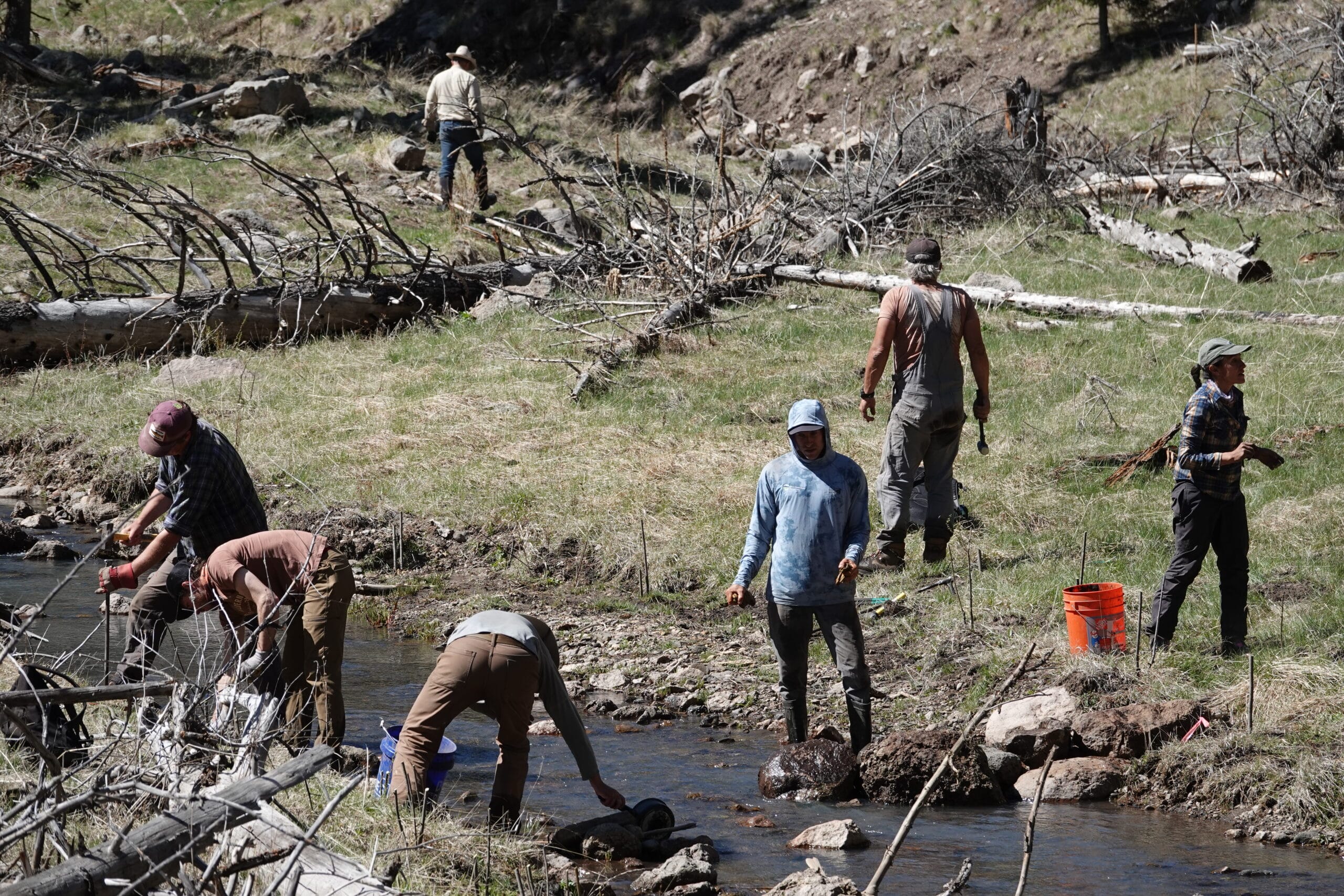Rambunctious tales from the first century of America’s first Wilderness
Come and get it, you SOBs!” bellowed camp cook and retired New Mexico Game and Fish game warden Lief Ahlm.
The refrain has become our dinner bell for the chow line during several days in the Gila Wilderness in New Mexico, where we have gathered to work on Gila trout recovery. But as we get closer, Ahlm is quick to remind us that women always eat first, and that the term only applies to his friends of 40 years. The rest of us are still pending judgment.
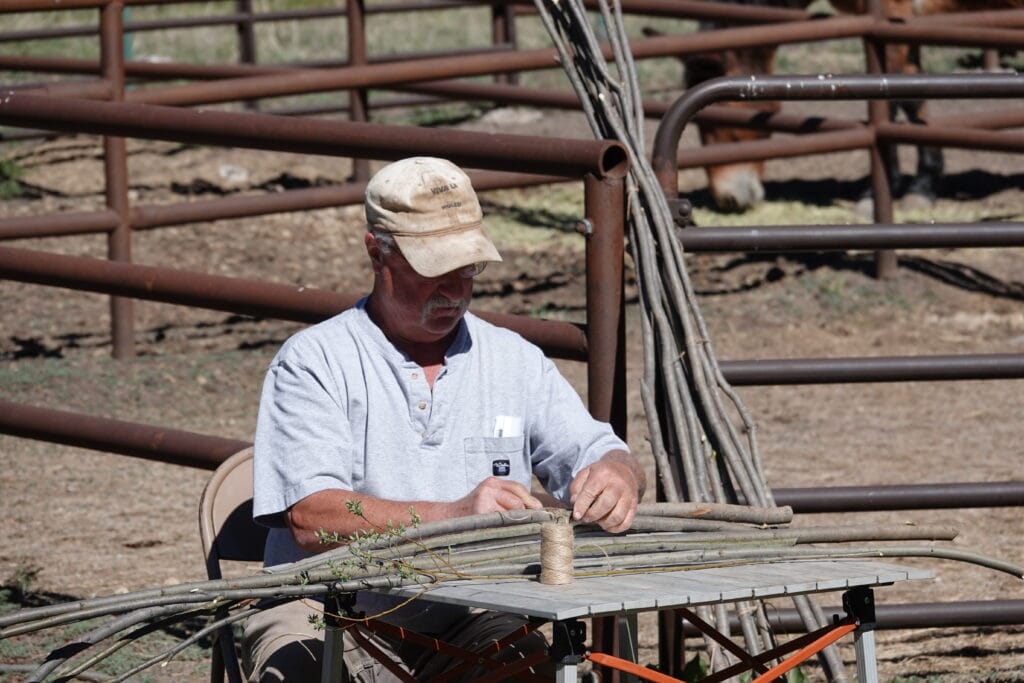
“If you don’t like the food, tell someone else,” said Ahlm. Of course, his Dutch oven meals and culinary expertise more than rise to the challenge of the hungry stomachs of the couple dozen people present at camp. Being New Mexico, chiles and spice are a guarantee in every meal.
Jim Brooks, retired U.S. Fish and Wildlife fish biologist, laughs at Ahlm’s lightly profane ribbing—par for the course in this group. “It’s only because we’ve known each other for so long.”
Nick Smith, another retired New Mexico Game and Fish warden and biologist, nods his head in agreement before launching into another towering tale of their times over the years in the Gila.
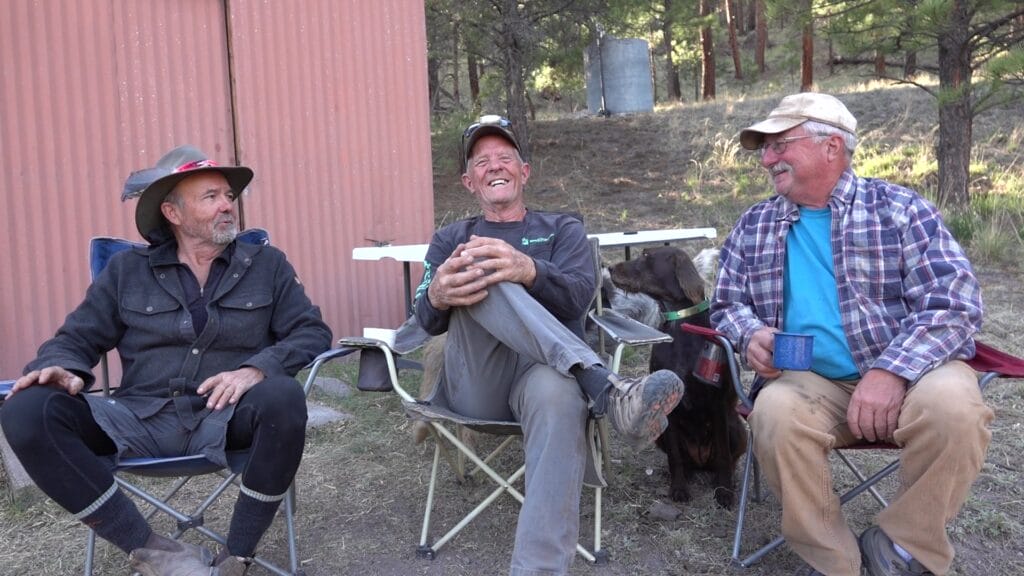
These men have worked on habitat restoration in countless areas around the Land of Enchantment over the course of their careers. And among their larger friend group of former colleagues – with which they continue to hunt, fish, and travel to this day – their incredible campfire stories of adventure, danger, and friendship continue to unite them in their respective retirements.
In short, they’re the type of men who are more impressed by creative vulgarity than vanity.
“We’ve been shot at, sued, and cheated death on more than one occasion,” said Ahlm. I joke that only leaves blackmail on the table for them to experience. “I guess blackmail would be new for us,” retorted Ahlm with a smile.
All these men have had to take a helicopter life flight ride throughout their careers, survived multiple mule wrecks, fought wildfires, and seen enough things across the state and Gila Wilderness to fill volumes of books.
“There’s a reason we all walk with a limp,” said Brooks, who estimates he’s probably spent years of his life sleeping in the Gila Wilderness throughout his career and personal adventures.
Progress and then burned hopes
What brings them together at Willow Creek Campground abutting the Gila Wilderness is their shared passion and vision for the future of its restoration after the Whitewater Baldy Fire in 2012. At the time, it was the largest wildfire in New Mexico history and burned nearly 300,000 acres of this special place.
“It was like seeing 25 years of your career go up in flames,” said Brooks.
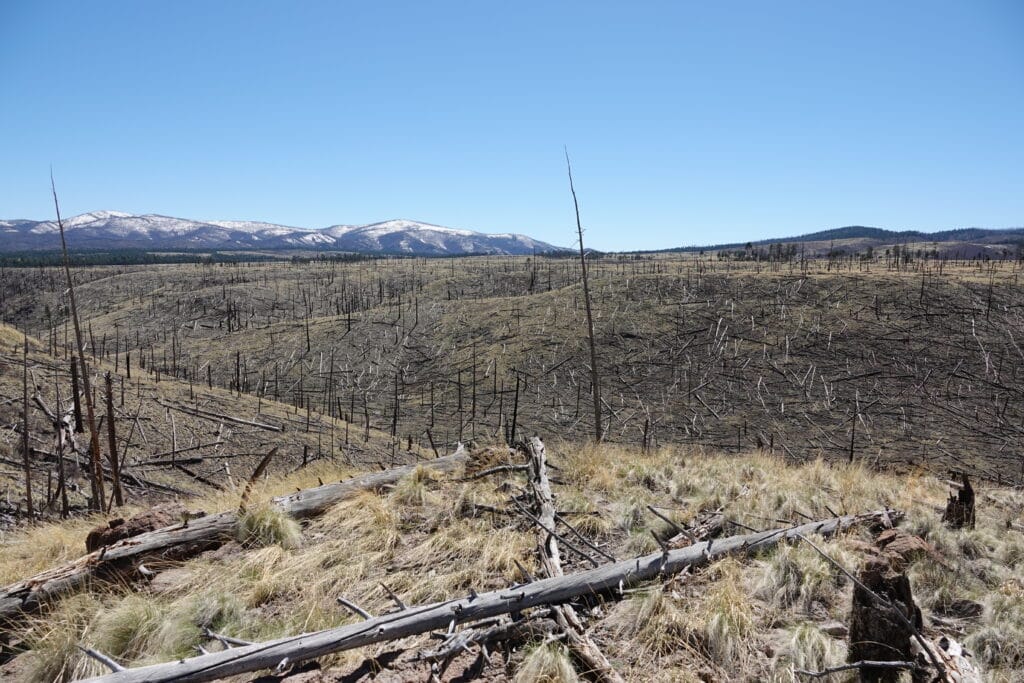
Whitewater Baldy scorched Gila National Forest, the Gila Wilderness, and valuable Gila trout populations and habitat, which had seen substantive progress in the preceding few years.
As one of the Southwest’s few native trout – and one of the rarest overall – the Gila trout can only be found in select high-elevation areas straddling the New Mexico and Arizona border. After decades of population decline from habitat loss, fires, overfishing, water diversion, non-native trout competition, and human impacts, the trout was listed as endangered under the Endangered Species Act (ESA) in 1973.
In the years leading up to the new millennium, the U.S. Fish and Wildlife Service worked closely with New Mexico Game and Fish, Arizona Game and Fish, and the U.S. Forest Service to restore Gila trout populations. In 2003, these entities and the University of New Mexico formalized the Gila Trout Recovery Plan to build upon these efforts.
Thanks to these efforts’ success, in 2006, the Gila trout was upgraded to threatened under the ESA, and anglers could fish for these trout for the first time in nearly 50 years.
But as fate would have it, the fire hit the heart of Gila trout habitat in 2012, impacting nearly half of the existing Gila trout streams and requiring three helicopter-mediated evacuations of unique populations before they were lost to the advancing flames.
Bringing back the Gila trout
Willow Creek Campground serves as a beloved access point for hikers and anglers. It is also the hub for the recovery of this native trout.
This trio – and many men and women like them – have pooled their collective knowledge and love of all things Gila to protect and restore this critical Gila trout habitat devastated by the fire.
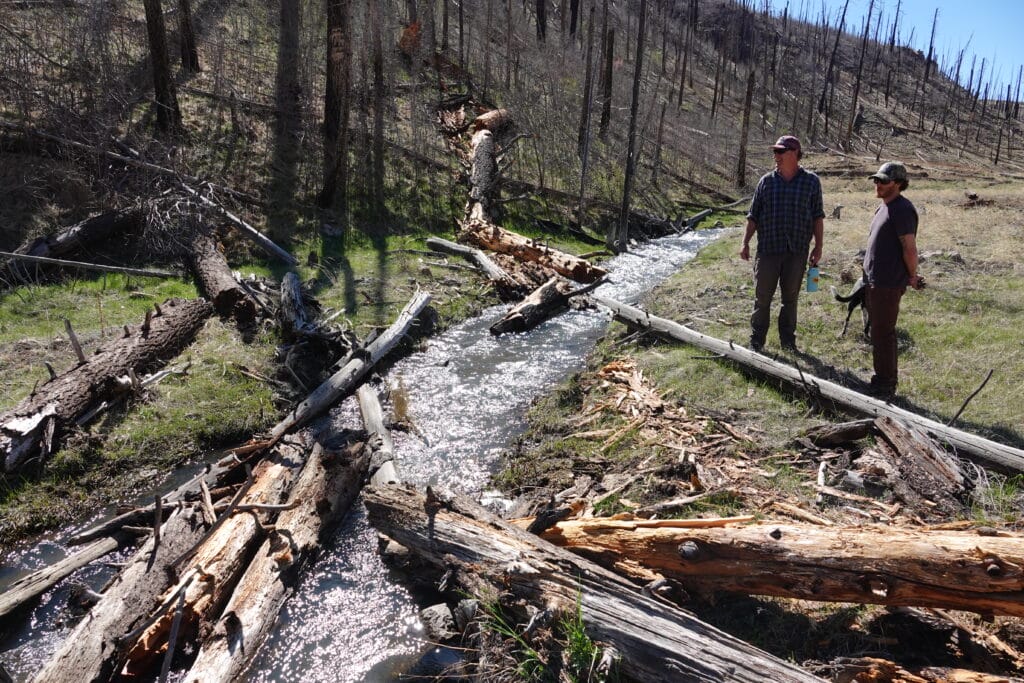
Since 2017, this group and Jeff Arterburn, college professor at New Mexico State University and president of the local Gila-Rio Grande Trout Unlimited Chapter, have supervised the restoration work completed by manual labor (e.g. willow plantings, rock structures, streambank stabilization, etc.). Funded by TU, the New Mexico Department of Environment’s River Stewardship Program, and the New Mexico Wilderness Alliance, this manual work has been similar to, if not more backbreaking than, the mechanized work downstream beyond the Wilderness boundary.
So, what gets a group of guys collecting social security to come out and do this backbreaking work?
“I had my honeymoon in this very cabin decades ago,” said Ahlm, gesturing to the New Mexico Game and Fish cabin serving as the base of operations. “Just the sheer diversity of life here in this landscape is beyond words; in the same wilderness area you have coatimundi, javelinas, elk, Gila trout, and all kinds of birds. If you look at all the wildlife in this area, and especially those listed under the Endangered Species Act, nothing compares to here.”
“If it wasn’t for the Gila, I probably wouldn’t be alive right now,” said Smith. “I’ve gone on all sorts of adventures around the world since I was 15 years old, and they’ve been great, but you need places like this. Wild people need wild places.”
“I read a book once that described the magic of evolution and what it takes to survive,” said Brooks. “And to me that’s the Gila – you either make it or you don’t.”
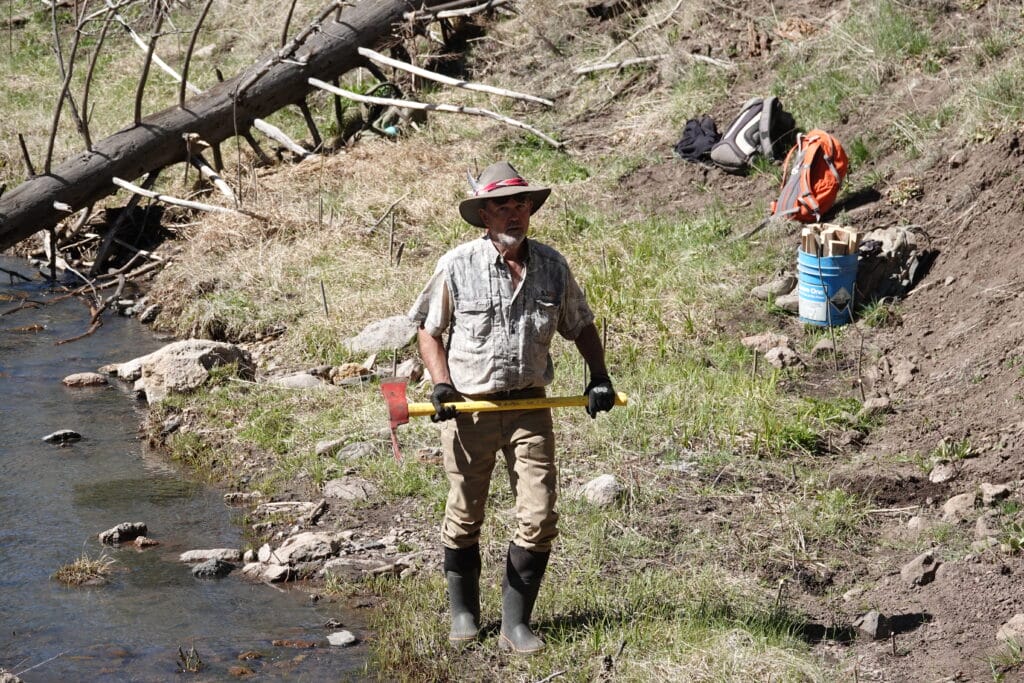
Around the campfire, they tell tales of adventures, loss, and admiration over beers and chewing tobacco. Dutch oven meals simmer under coals nearby and dogs continually mill in between them looking for affection.
The only times they become serious are when they talk about their mentor David Propst, their animals, and the importance of coming home in one piece. Despite their bluster and friendly insults, they are quick to deflect credit and often rely on one of the others to tell stories of accomplishment on their behalf.
Stories upon stories
When pressed for a story, they offer one example only after emphasizing how much they learned from the experience. Accidents still happen in the Wilderness even to those who stress safety.
The story revolves around younger versions of Smith and Brooks. At the time, they were miles apart in the Gila Wilderness in the process of recovering Gila trout populations.
Smith, wearing a Carhartt jacket and t-shirt, was leading a train of pack mules. Suddenly, he saw a panicked mule and horse run past him with flames shooting out of the panniers on the mule – the storage bags used for packing – and other backpacks and equipment underneath a tarp.
Quick to react, Smith chased after the mule and horse with two other colleagues. When he caught up to the animals, he took off his jacket and tried to put out the flames with it as his colleagues cut the horse free and tried to remove the burning packs and panniers from the mule.
They were successful in these efforts until they threw off the tarp.
The next thing he knew, Smith was blown back about 15-feet near a steep cliff. A pannier had exploded.
Gone were his glasses, his head was bleeding from hitting it on a rock, and his arms were burning. He rolled down the hill to put out the flames, and the next thing he saw was a bucking mule, now itself on fire, heading towards him.
He again rolled behind a nearby bluff to get out of the way of the mule, before quickly seeing his colleague running to the creek below to put out his burning chaps.
Thinking that was a smart idea, he rushed to the creek and put his arms in it expecting cold relief.
He was wrong, and claims that was the first time he felt pain during the whole incident.
“I heard this all over the radio and we just thought he was dead,” said Brooks.
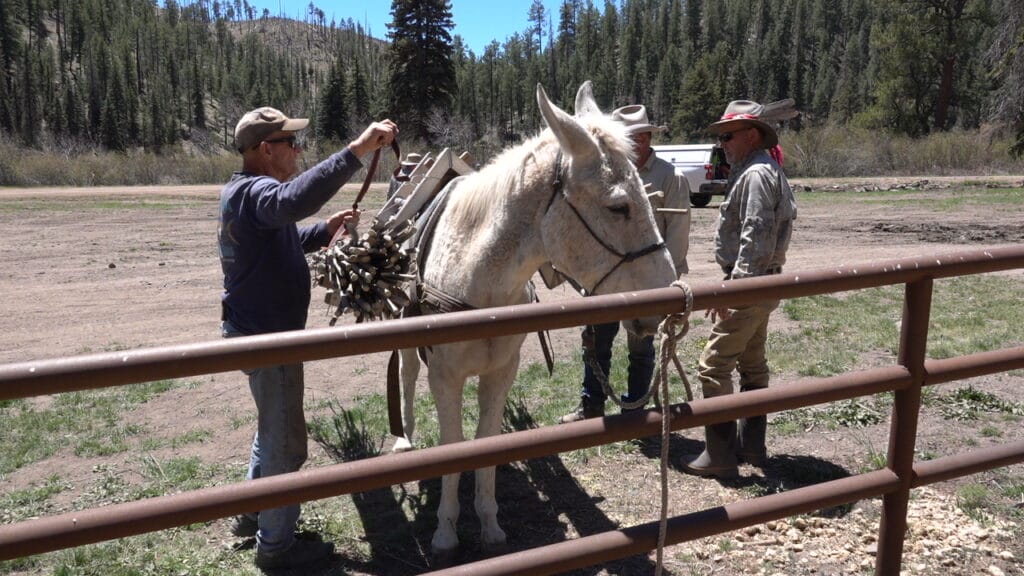
To the best of Smith’s knowledge, a fish shocking battery, which in those days did not come with covers for terminals, had somehow been shorted by other pieces of metal fish shocking equipment in the pannier and set a bag of potassium permanganate on fire, which is used to dissolve piscicides used in streams to remove non-native trout. From there, the flames caught a half a can of Coleman camp fuel on fire, which when exposed to air after removing the tarp caused the explosion.
“I’d have died if it didn’t blow out the bottom of the pannier,” said Smith. “I was told when this reaction first started it created a purple plume of smoke, as well. Everything was layered in that pannier to prevent contact, but somehow it still managed to short.”
But the story didn’t end there. In dire shape, two helicopters were sent to retrieve Smith and his colleagues. After one of them broke, and the other was facing logistical challenges flying around the Wilderness, he decided he needed to self-rescue.
“I was amazed he was still alive, and then I heard on the radio that he was trying to walk out of the Wilderness,” said Brooks. “From afar, we thought he was being hardheaded, but when you hear the full story and the challenges the helicopters faced, you began to understand the decision.”
Miraculously, the mule and everyone involved in the incident survived, although the mule faced challenges leading to its eventual passing a year later.
“That was a good mule, too,” said Smith as a moment of respectful silence broke out amongst the three.
Working to make it better
When asked again why they choose to continue coming out here to help the Gila Wilderness recover, they simply emphasize they know what it takes to make things happen here and want to pass along that information to the next generation.
“It’s just a special place,” said Ahlm. “Which is why you have a camp full of people right now from different backgrounds and ages trying to make it better.”
Trout Unlimited is supporting the work this group and Arterburn started inside the Gila Wilderness along Little Turkey Creek, which flows downstream into Willow Creek and then onward into the Gila River before making its way across Arizona and eventually to Phoenix.
“This is kind of a forgotten, but nonetheless important, area of the Colorado River Basin,” said Eric Head, Gila Trout project manager for TU. “The water here eventually flows down to Safford, Arizona, which relies on it for cotton production and onward to the Phoenix Valley. So, the cleaner, colder, and longer lasting we can make the water up here at the headwaters, the better,” he said.
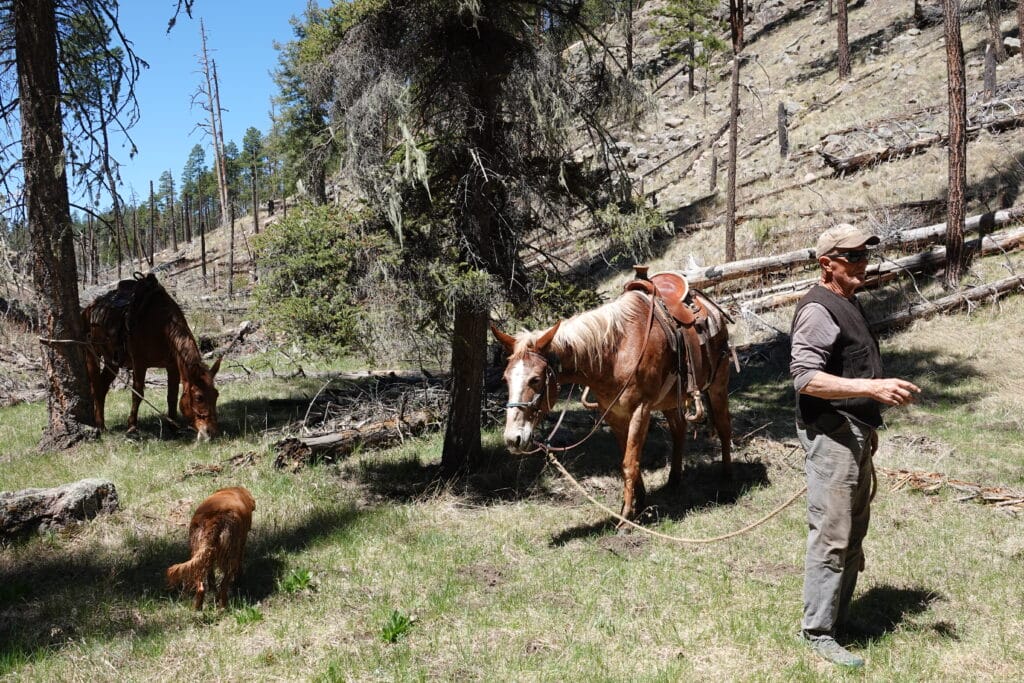
Head was hired in 2023 to bolster work on the Little Turkey Creek project and oversee multiple restoration projects investing $1.6 million across the Middle Fork of the Gila River.
An influx of funds through regional Forest Service agreements, TU’s 5-year, $40 million Keystone Agreement with the Forest Service, and the Bipartisan Infrastructure Law and Inflation Reduction Act have made this possible.
“The combined experience of this group and institutional knowledge of how to scale up projects in unison with both state and federal agencies has been fundamental in the effort to restore this watershed,” said Head. “Coupled with Arterburn’s ability to bring students to learn from this group and the other experts they are able to bring to these projects, the future looks bright for everything Gila – trout, Wilderness, River, and Forest.”
To date, and in conjunction with the next generation of guardians from New Mexico State University, Western New Mexico State University, and the local TU chapter, a total of 1,637 willows have been planted along Little Turkey Creek in the Wilderness area to stabilize the stream banks and restore lost habitat. So far, 83 percent of the willow plantings have taken hold and the ones planted in previous years are now blossoming on their own, with new stem growth up to 2 feet long – a promising harbinger for the future. Installing around 100 rock structures also helped to reduce sediment and erosion and slow the flow of Little Turkey Creek to be more conducive to Gila trout habitat.
While there are surely many more tales from the first century of Wilderness, it’s important to honor the wild people who have dedicated significant portions of their lives to keep it wild for all of us. To them, we owe our gratitude and ears on what it takes to protect our nation’s special places in the centuries ahead.



